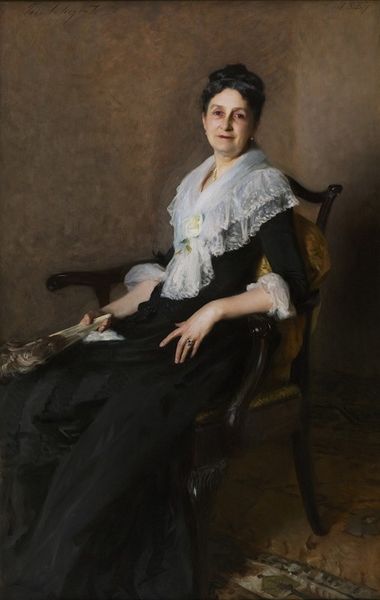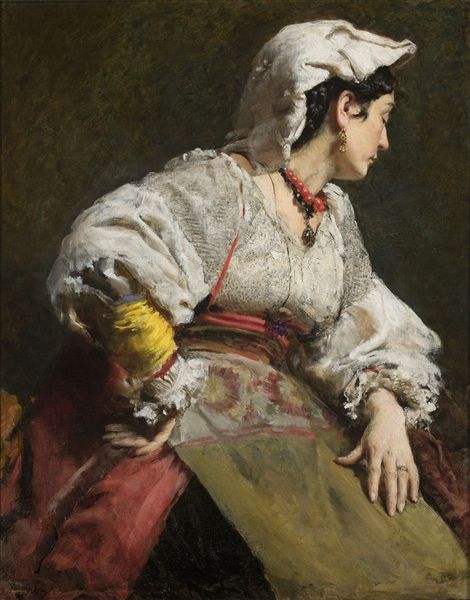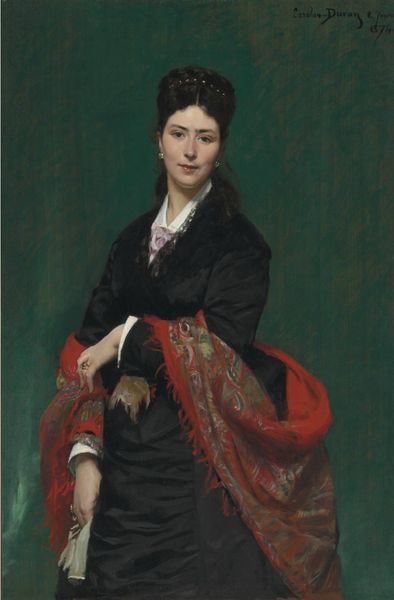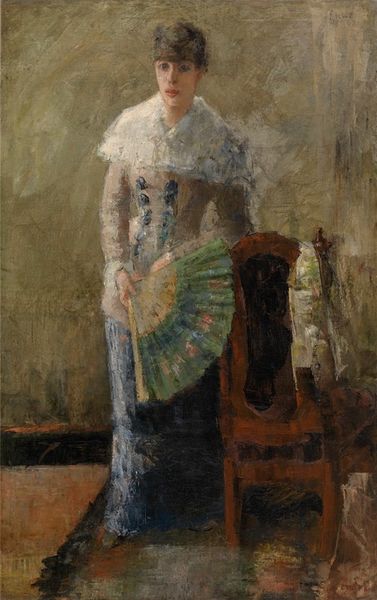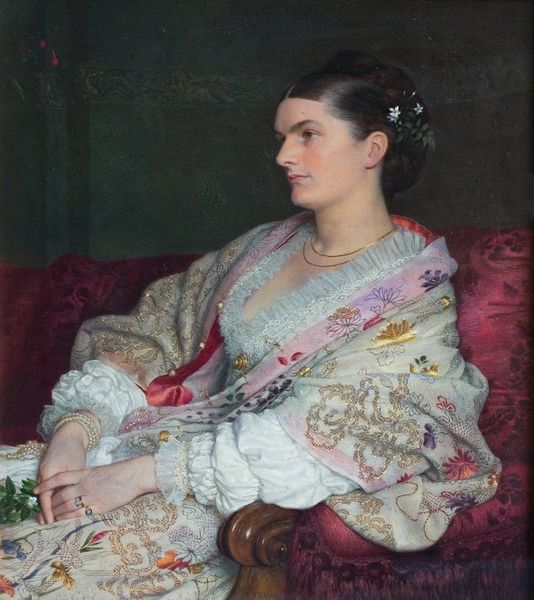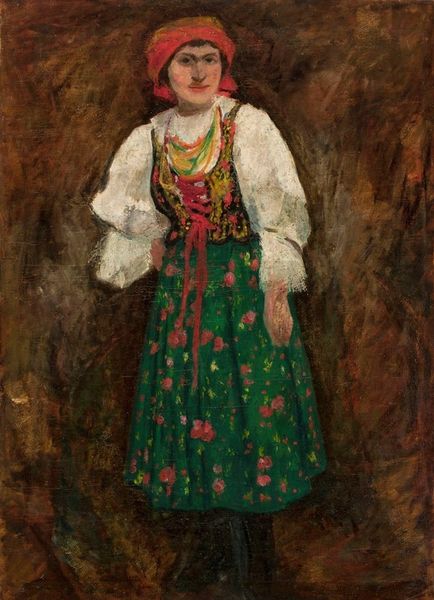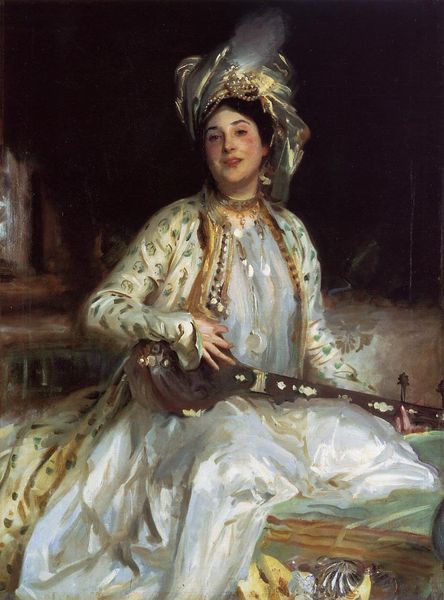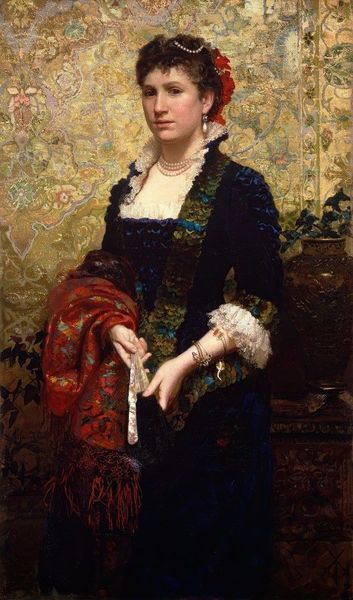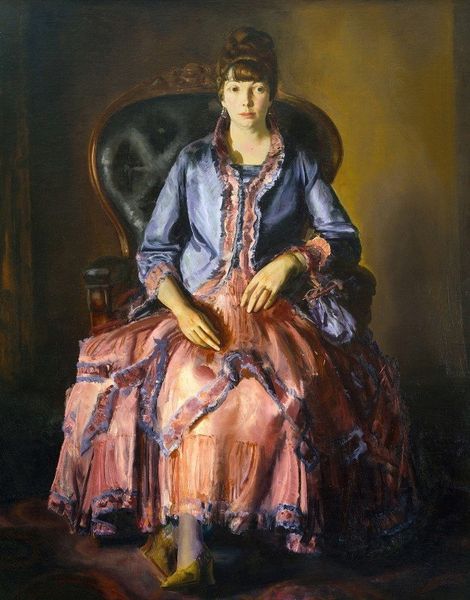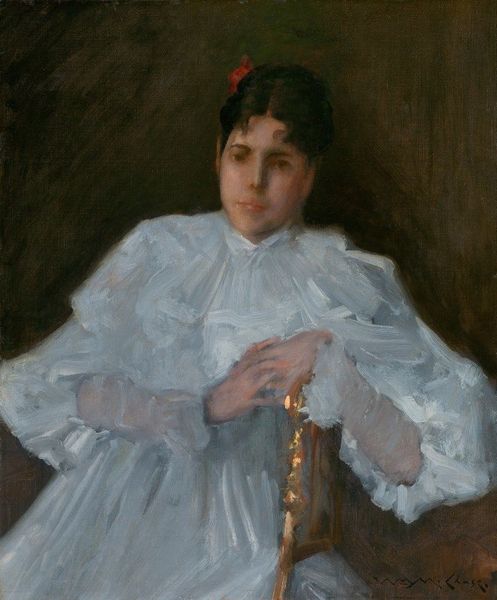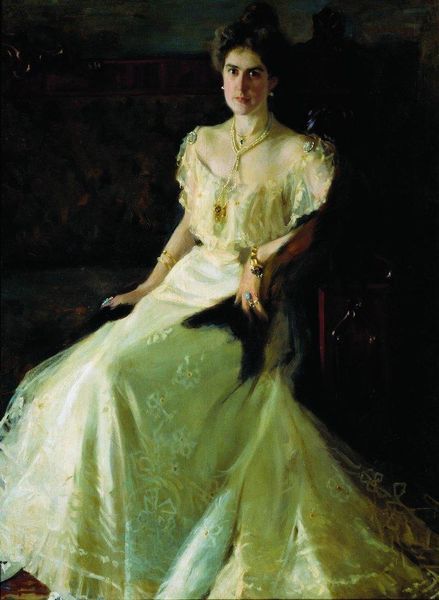
painting, oil-paint, impasto
#
portrait
#
painting
#
oil-paint
#
oil painting
#
impasto
#
painting painterly
#
russian-avant-garde
#
lady
#
portrait art
#
modernism
#
fine art portrait
#
realism
Dimensions: 90 x 72 cm
Copyright: Public domain
Curator: Take a moment with this intriguing portrait from 1906 by Ilya Repin. It's entitled "Portrait of Mara Konstantinovna Oliv." Editor: She projects such a self-assured stillness, doesn't she? A queen in repose. The richness of the colors and her striking patterned dress and gold headpiece almost hum with restrained energy. Curator: The headpiece, yes, immediately draws the eye. Think about its significance. Repin’s choice to depict her wearing it situates her within a particular cultural narrative, doesn’t it? Highlighting potential themes of cultural identity, maybe a conscious acknowledgement, or perhaps even a quiet assertion, of her place within the complex tapestry of early 20th-century Russian society? Editor: Exactly. Those floral and foliate patterns, so meticulously crafted in gold thread, they’re not just decoration. Gold universally carries meanings of status and divine right, and by adorning her head in this manner, there's a claiming of something intrinsic within her own being. Do you see, in the way her hand is positioned, with rings, bracelets? Curator: Absolutely. It's not accidental. We read this figure through layers: through visual symbols, her garments, her jewelry—material markers that reinforce her position. There’s her gaze, which projects privilege, while her positioning within this rich, almost abstracted, background suggests the social forces always at play. How might her identity, her womanhood, intersect with the moment of revolutionary turmoil happening then? Editor: A tension there between what we see represented on the surface, what Repin is intending to represent, and the socio-political upheaval occurring around them both. It invites us to confront broader narratives about power, about identity, about female agency in a period defined by massive change. Curator: It does. A testament to the enduring relevance of portraiture. Editor: And how potent it can be to analyze art's relationship to power structures. Curator: Yes, I walk away seeing this portrait as a window into that intersectional space, not just between image and meaning, but also identity and the social matrix. Editor: Precisely. Those are powerful reminders to take with us.
Comments
No comments
Be the first to comment and join the conversation on the ultimate creative platform.
